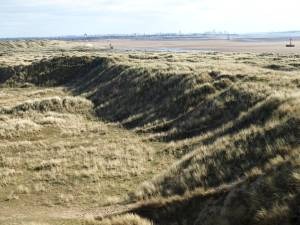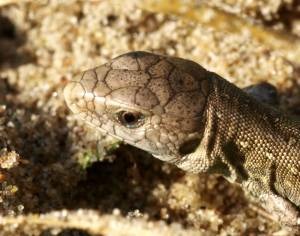Dr Phil Smith’s Wildlife Notes
October 2007
A lot of my spare time this month has been spent as a participant in a fascinating project on the history and effects of sand-winning at Formby Point. This was a major industry from about the 1920s to the 1960s, removing several sand-dunes, such as Beacon Hill, Shorrocks Hill and Cabin Hill, which were imposing enough to have been given local names. The massive quarries can be seen on old aerial photographs going back to 1945. In addition, large amounts of sand were taken from dunes by the sea, despite the fact that Formby Point had been eroding since 1906. This so weakened the coast-protection role of the dunes that the then Mersey & Weaver River Authority built a sea-defence bank 750m long at Cabin Hill in 1970 at great public expense.

The effects of quarrying on landscape and wildlife must have been pretty catastrophic at the time but, fortunately, sand-dune habitats can recover quite quickly from major disruption and the quarries, although still visible on the ground, have now re-vegetated. The project organiser and Civic Society committee member, John Houston, is keen to hear from anyone with memories or photographs of the sand-winning industry.
While surveying one of the old quarry sites on 21st October, I was surprised and delighted to find a juvenile Sand Lizard, still active despite the late date. This was in an area where over 100 captive-bred individuals were released in the 1980s, so it is encouraging that this “flag-ship” species is still present and breeding here. The North Merseyside Amphibian & Reptile Group hopes to study this area in detail next year.

October is a great month for migrating birds, including Arctic-breeding species either passing through on their way south or arriving to winter with us. They include Pink-footed Geese from Iceland and Greenland which have turned up in unprecedented numbers. Derek Forshaw, who has been organising goose counts for over 30 years, tells me that the Lancashire & North Merseyside count of Pinkfeet on 14th October was just over 46,000, of which 22,000 were on the Fylde. This is the second highest count ever in the region and the largest for October by a considerable margin. Many of these birds will soon be leaving us to feed on the harvested sugar-beet fields of Norfolk, before returning in the New Year.
Bird-watchers are also out and about this month looking for rare vagrants blown off course from their normal routes. As usual, the east coast scored most points, Brown Flycatcher and Red-flanked Bluetail at Flamborough Head being among the highlights, but Wirral also had more than its fair share of extreme rarities, with Radde’s Warbler and Blyth’s Reed Warbler. Martin Mere pitched in with a Great-grey Shrike in mid-month, while Marshside’s Glossy Ibis was present throughout, joined by an American Green-winged Teal from 14th and up to eight Little Egrets.
More prosaic were the 900 Coot and 188 Mute Swans I counted on Southport Marine Lake on 26th. The Marine Lake is actually one of the major haunts of these two birds in Northwest England. Can anyone beat the record counts here of 1299 Coot and 260 Mute Swans?
